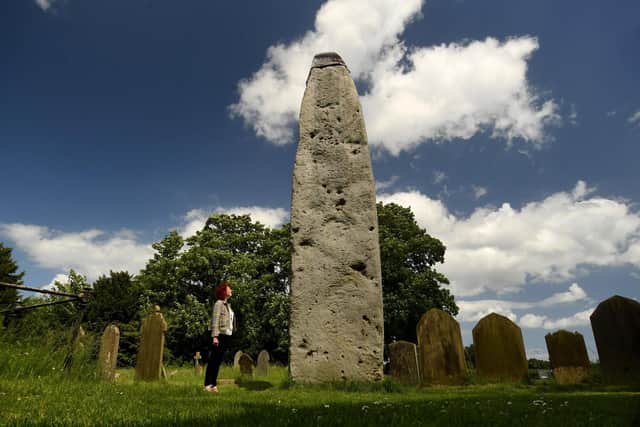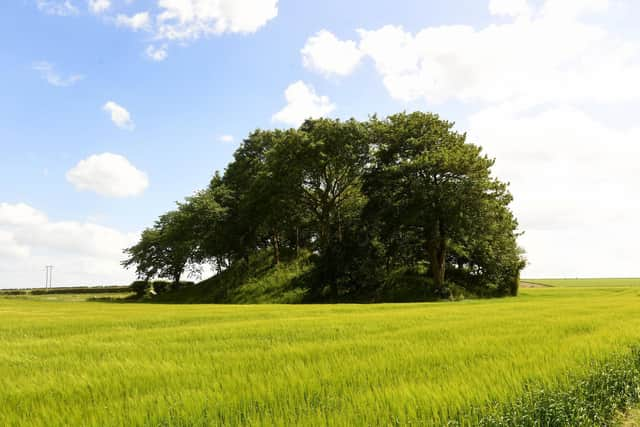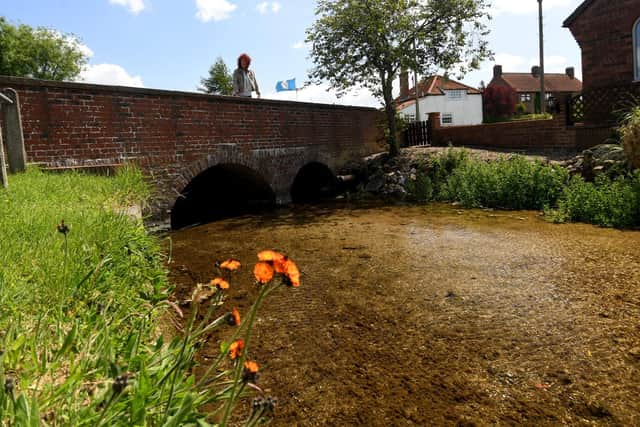New trail highlights hidden prehistoric features along 'East Yorkshire's Valley of the Kings' - and the Wolds' answer to Stonehenge
This is East Yorkshire’s “Valley of the Kings” - which may seem far-fetched - but archeologists have long argued that the landscape round Rudston is as significant as that surrounding Stonehenge or Avebury.
A new trail shows how people can see the monuments along the course of the Gypsey Race - a stream which flows overland in certain parts and underground in others, before finally entering the sea at Bridlington Harbour.
Advertisement
Hide AdAdvertisement
Hide AdThe watercourse must have been a source of awe to our ancestors for its disappearing tricks - and the fact that in downpours water could suddenly rise to the surface in great noisy swirling whirlpools.


The leaflet was put together by Sewerby Hall curator Janice Smith who said: “We’re calling it the Valley of the Kings because it is the only watercourse on the High Wolds and it flows down the Great Wold Valley, a bit like the Nile flows into the Mediterranean.
“When you come to study it closely all the monuments are in a specially close relationship with the watercourse.
“The monuments commemorate significant people, if not chieftains, and they would have been the Kings of all this little bit of Yorkshire.”
Advertisement
Hide AdAdvertisement
Hide AdSome four to 5,000 years ago the Rudston Monolith - Britain’s tallest standing stone at 24ft tall and weighing 40 tonnes was erected possibly after being rafted down from the North York Moors. It stands at the centre of numerous sites including henges, prehistoric settlements, enclosures, cursuses, round and square barrow cemeteries.


“Rudston is where the Gypsey Race turns east again and there is a series of four cursus monuments which converge in some way or another with the monolith in the centre,” said Janice.
Cursuses resemble ditches and are among the oldest monumental structures in the country and can be miles long.
Now only visible from the air as crop marks they were once thought to be ancient racetracks, but current thinking is that they may have been processional or ceremonial routeways.
Advertisement
Hide AdAdvertisement
Hide AdArchaeologists say the concentration of four such enclosures (probably five) in such a small area is “unique in a British context and the juxtaposition with a massive standing stone is unparalleled”.


Monuments like Willy Howe, one of the Valley’s “big four” prehistoric monuments, a mound standing 50ft (15 metres) high west of Burton Fleming can be seen from the road. Dating to between 2400-1500 BC, it was chopped in half by antiquarians in the 19th century, who never backfilled it.
Of the monuments, just one appears undamaged by diggers or by the plough - Sands Wood on Woldgate, which dates to the late Neolithic or Bronze Age. The Gypsey Race flows to the north of the barrow.
The leaflet describes 12 features of historic interest along the way, including monuments, barrows, and the remains of a barrow cemetery at Rudston.
It is available at the Welcome Centre at Sewerby Hall and Gardens, and at Bridlington North and Bridlington Central libraries.